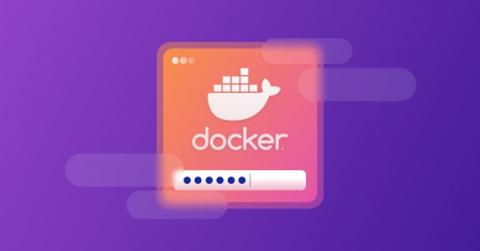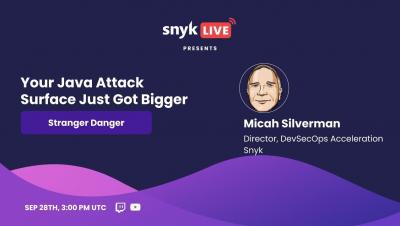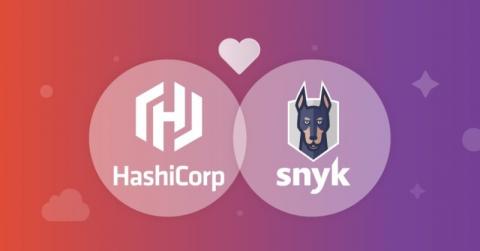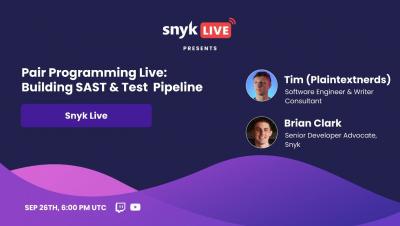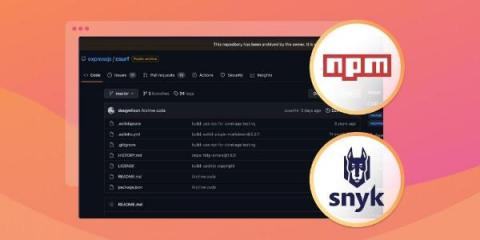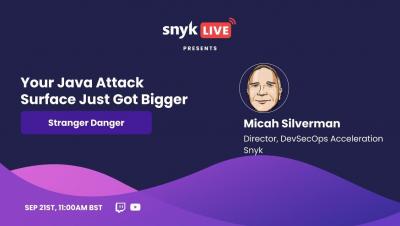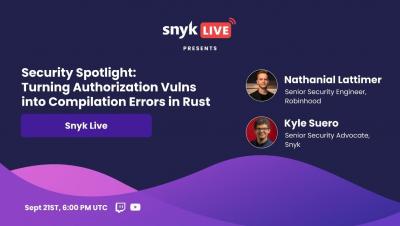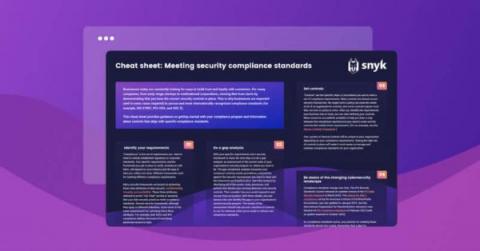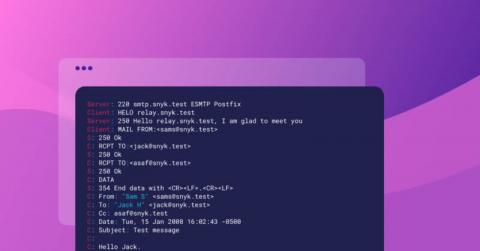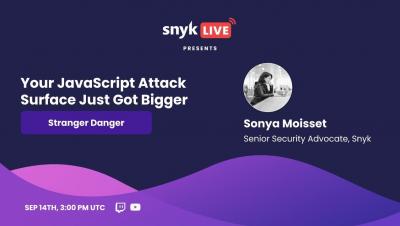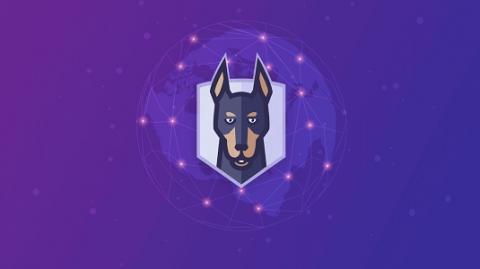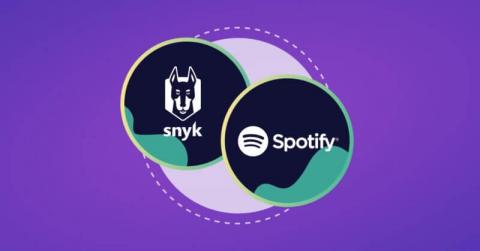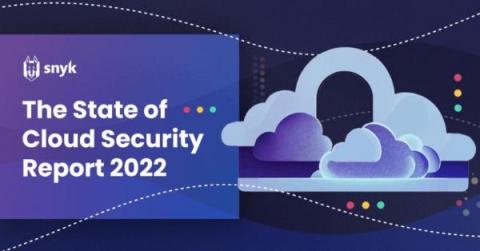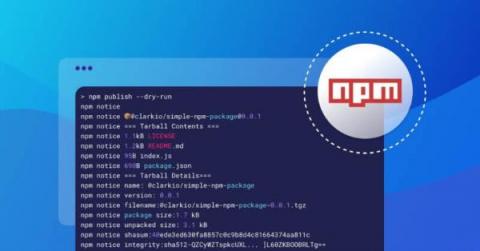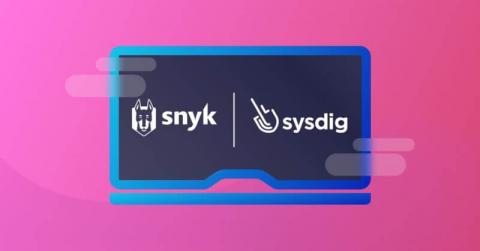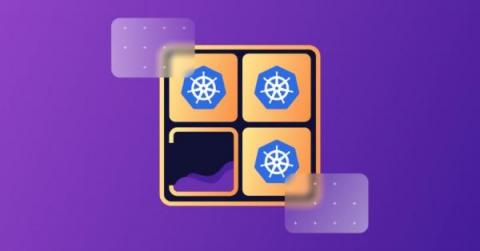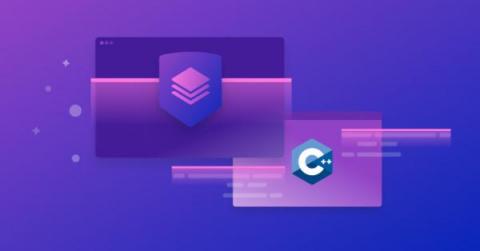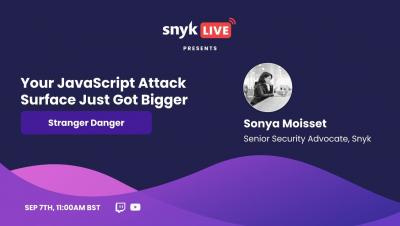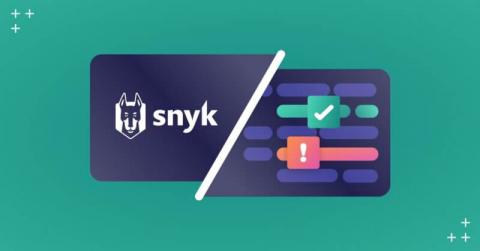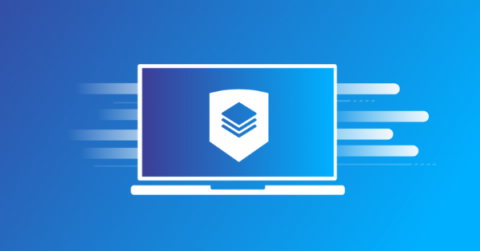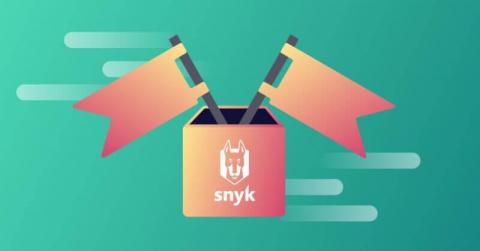Security | Threat Detection | Cyberattacks | DevSecOps | Compliance
September 2022
Why developers hold the key to cloud security
In the days of on-prem data centers and early cloud adoption, the roles of application developers, infrastructure operations, and security were largely siloed. In the cloud, this division of labor increases the time-to-market for innovation, reduces productivity, and invites unnecessary risk.
Choosing the best Node.js Docker image
Choosing a Node.js Docker image may seem like a small thing, but image sizes and potential vulnerabilities can have dramatic effects on your CI/CD pipeline and security posture. So, how do you choose the best Node.js Docker image? It can be easy to miss the potential risks of using FROM node:latest, or just FROM node(which is an alias for the former). This is even more true if you’re unaware of the overall security risks and sheer file size they introduce to a CI/CD pipeline.
Introduction to OWASP's Vulnerable Node.js Apps: Part 1 | Snyk
Stranger Danger: Your Java Attack Surface Just Got Bigger
Supply chain security and Executive Order M-21-30
On September 14, the White House released Executive Order M-21-30, emphasizing and reminding us that there are NIST guidelines for securing any software being sold to the US Government. According to the Executive Order (EO), self-attestation is a requirement for software vendors or agencies and acts as a “conformance statement” outlined by the NIST Guidance.
Snyk IaC for Terraform Enterprise: Expanding Snyk compatibility with HashiCorp Terraform
Even the most precise and regimented DevOps teams can be plagued by numerous post-deployment security issues, causing potentially damaging production delays and engineering rework. Building on Snyk’s successful acceleration of DevSecOps, Snyk IaC empowers developers to treat Terraform like any other form of code and proactively test IaC early as well as continuously monitor infrastructure post-deployment.
Introducing the new Snyk UI
Starting October 12th, 2022 we’ll be rolling out some exciting new user interface changes for the Snyk application, at app.snyk.io. These changes make use of the Snyk design system by incorporating standardized UI components, an updated color palette, and other elements to help you get even more from Snyk. In this blog post, we’ll walk through the most important changes.
Pair Programming Live: Building SAST & Test Pipeline
Explaining the csurf vulnerability: CSRF attacks on all versions
On September 11th, 2022, Snyk published a vulnerability report for the popular CSRF token management csurf npm package. The vulnerability impacts all known versions, which are currently yielding more than 400,000 downloads per week. The vulnerability report is based on the public disclosure by security consultant Adrian Tiron and their write-up on the Fortbridge blog.
Looking back at Black Hat USA 2022
For the past few days, I’ve been getting a lot of messages asking about my experience at this year’s Black Hat USA. So in this post, I’ll be recapping the conference to give you an inside look at what was presented and provide some helpful perspective. Black Hat is one of the largest — and most talked about — cybersecurity conferences. Its inception dates back to 1997.
Stranger Danger: Your Java Attack Surface Just Got Bigger
Meet the Best Hackers: Shuchita Mishra and Parth Shukla | SnykWeek Boston
Security Spotlight: Turning Authorization Vulns into Compilation Errors in Rust
What's It Like To Be Snyk's CEO? | Cloud Security Podcast Interviews Snyk CEO Peter McKay
This Week in VulnDB
Cheat sheet: Meeting security compliance standards
Security and compliance has a major role in every organization. Businesses are nothing without the trust and loyalty of their customers, and for many companies — from early-stage startups to multinational corporations — winning that trust starts by demonstrating that you have the correct security controls in place. Internationally-recognized compliance standards, such as ISO 27001, PCI-DSS, and SOC 2, make up the industry-standard goals that most businesses and organizations pursue.
Avoiding SMTP Injection: A Whitebox primer
SMTP Injection vulnerabilities are often misunderstood by developers and security professionals, and missed by static analysis products. This blog will discuss how common SMTP Injection vulnerabilities can exist in libraries and applications, and provide tips for finding and remediating them quickly.
10 best practices to containerize Node.js web applications with Docker
September 14, 2022: Check out our new and improved cheat sheet for containerizing Node.js web applications with Docker! Are you looking for best practices on how to build Node.js Docker images for your web applications? Then you’ve come to the right place! The following article provides production-grade guidelines for building optimized and secure Node.js Docker images. You’ll find it helpful regardless of the Node.js application you aim to build.
Stranger Danger: Your JavaScript Attack Surface Just Got Bigger
Snyk's State of Cloud Security Report Reveals 80% of Organizations Have Experienced a Severe Cloud Security Incident in Past Year
How Spotify uses Snyk to secure the SDLC
Spotify’s engineering team recently published a blog discussing their use of Snyk to maintain security testing in the SDLC. The following is a recap of that blog written by Engineering Manager, Edina Muminovic. Spotify, a company known for employing thousands of world-class developers, needed to redraw its software development lifecycle, or SDLC.
Announcing the 2022 State of Cloud Security report from Snyk
Cloud computing has created the most profound shift in information technology in recent memory. Leveraging cloud technology, companies can build, deploy, and scale their applications faster than ever. But the adoption of cloud native tools and processes also brings new security challenges. Between complex cloud infrastructure and the expansion of cloud-based services, malicious actors have access to a bigger attack surface than they did even a few years ago.
Best practices for creating a modern npm package
Technology is always changing and your processes and practices need to keep up with those changes. So while npm is 12 years old, your practices around npm package creation should hopefully be a lot more modern. If you have a feeling they may be a little out of date, though, keep reading.
How Onna Technologies uses Snyk & Sysdig to secure the SDLC while saving time and money
Onna Technologies, a data centralization software company, integrates security across every facet of their development process by using Snyk and Sysdig. We recently sat down with Onna’s Brent Neal (Director of Security), Mike Hoffman (Lead Security Engineer), and Andrew Leeb (Senior Software Engineer) to discuss data protection and compliance, cloud security priorities, and the benefits using Snyk and Sysdig for complete end-to-end container security.
De-risking Code with Snyk and Codecov
Using Kubernetes ConfigMaps securely
ConfigMaps is an API object used in Kubernetes to store data in key-value pairs. It’s essentially a dictionary that contains configuration settings. Some details you might expect to find in a ConfigMap include hostnames, public credentials, connection strings, and URLs. A ConfigMap decouples an application’s code from the configurations, making it possible to alter them without impacting the application.
Integrating Snyk Open Source C/C++ security scanning into CI pipelines
Snyk Open Source supports C and C++ scanning for vendored open source dependencies via CLI — and we are happy to share that it is now available via our CI plugins as well. This guide will walk you through integrating C/C++ security scanning within pipelines to get vulnerability information and remediation advice directly to developers. Note that in the scope of this guide, we’ll refer to “C/C++” as just “C++”
How to find and fix XML entity vulnerabilities
XML is a human-readable text format used to transport and store structured data. Tags and data structures are defined by users in self-describing documents that are universally parsable by any XML tool, giving developers a highly configurable mechanism for data representation. To build on XML’s limited base syntax, an author can define the structure and acceptable content of a document’s data using a document type definition (DTD).
Best practices for API gateway security
APIs are a critical component of today’s development landscape because of their importance in microservices. Since modern software is often composed of various microservices, certain functionalities may be beyond the scope of an individual API. With an API gateway, we can aggregate those services to behave as if they were a single API, and return complex responses from disparate microservices through a single call to an API gateway.
Stranger Danger: Your JavaScript Attack Surface Just Got Bigger
Snyk Security using Language Server Protocol
Snyk provides plugins or extensions for Visual Studio Code, Jetbrains IDEs like IntelliJ, WebStorm, PHPStorm, GoLand, and Visual Studio. But have you ever wanted to integrate Snyk in your daily work when your favorite editor or IDE is Vim, Emacs, Sublime, or Eclipse? This is going to be possible soon, as we’ve published our Eclipse plugin, including the new Snyk Language Server Protocol.
Response to the Enduring Security Framework (ESF) Guide for Developers
At Snyk we invented developer-first security. We believe involving developers in the practice of security is key to building and running modern applications. This is exactly why the recent publication, Recommended Practices Guide for Developers by the The National Security Agency (NSA), Cybersecurity and Infrastructure Security Agency (CISA), and the Office of the Director of National Intelligence (ODNI) piqued our interest.
This Week in VulnDB
The npm faker package and the unexpected demise of open source libraries
Where do open source dependencies go to die, and why do they come to an end? What happened to the npm faker module? Can it happen again? Join me to learn how open source software libraries rise to glory and how they reach their end of life. I’ll also include some takeaways for developers and ops engineers.
Solve Hack the Box and other CTF challenges with Snyk
Hack The Box (HTB) is a platform that gamifies cybersecurity training. It’s suitable for aspiring pen testers, as well as developers who want to become security champions — or simply understand the mindset of adversaries a bit better — in order to make their applications more secure.




